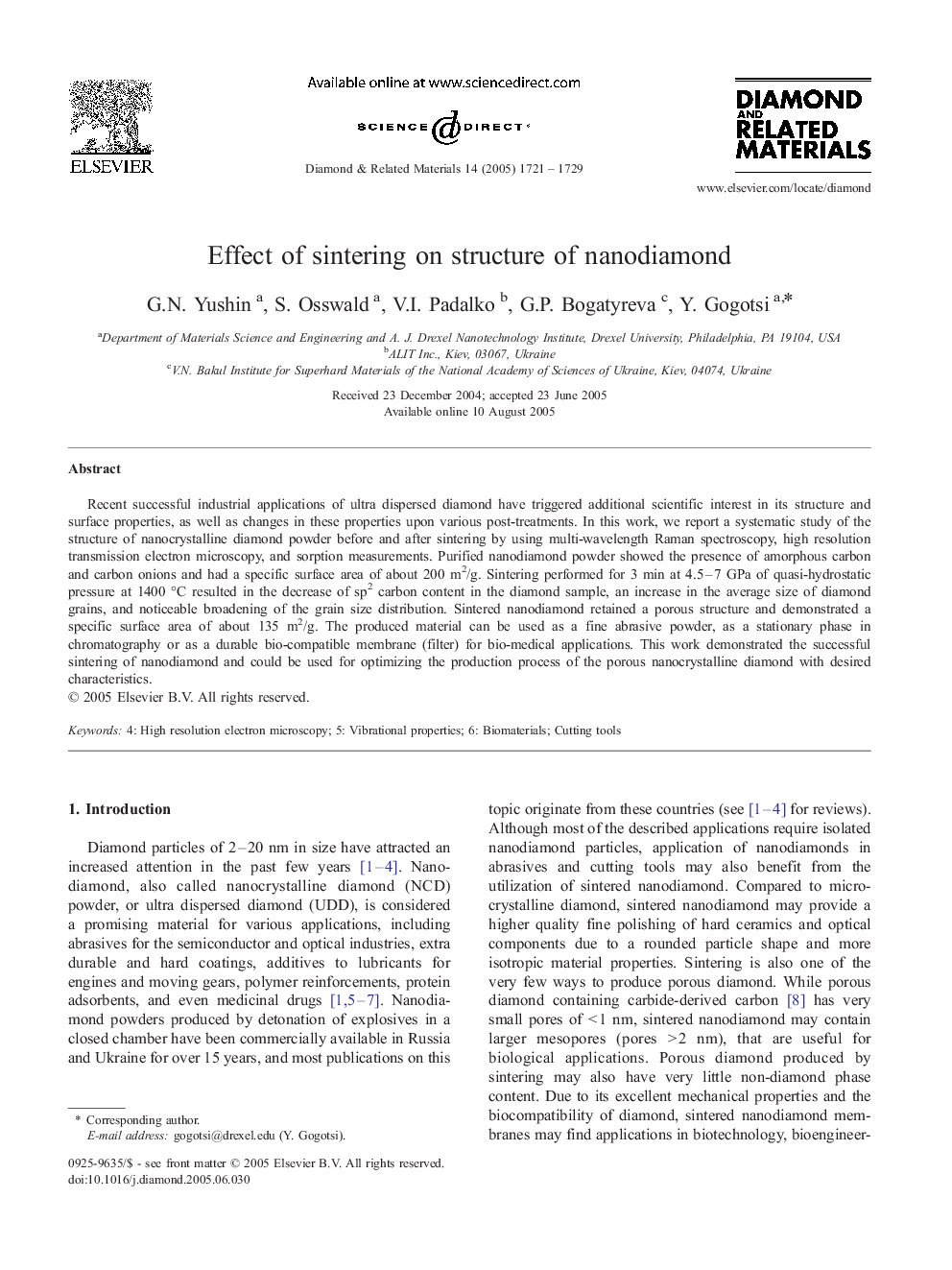| Article ID | Journal | Published Year | Pages | File Type |
|---|---|---|---|---|
| 10400995 | Diamond and Related Materials | 2005 | 9 Pages |
Abstract
Recent successful industrial applications of ultra dispersed diamond have triggered additional scientific interest in its structure and surface properties, as well as changes in these properties upon various post-treatments. In this work, we report a systematic study of the structure of nanocrystalline diamond powder before and after sintering by using multi-wavelength Raman spectroscopy, high resolution transmission electron microscopy, and sorption measurements. Purified nanodiamond powder showed the presence of amorphous carbon and carbon onions and had a specific surface area of about 200 m2/g. Sintering performed for 3 min at 4.5-7 GPa of quasi-hydrostatic pressure at 1400 °C resulted in the decrease of sp2 carbon content in the diamond sample, an increase in the average size of diamond grains, and noticeable broadening of the grain size distribution. Sintered nanodiamond retained a porous structure and demonstrated a specific surface area of about 135 m2/g. The produced material can be used as a fine abrasive powder, as a stationary phase in chromatography or as a durable bio-compatible membrane (filter) for bio-medical applications. This work demonstrated the successful sintering of nanodiamond and could be used for optimizing the production process of the porous nanocrystalline diamond with desired characteristics.
Keywords
Related Topics
Physical Sciences and Engineering
Engineering
Electrical and Electronic Engineering
Authors
G.N. Yushin, S. Osswald, V.I. Padalko, G.P. Bogatyreva, Y. Gogotsi,
